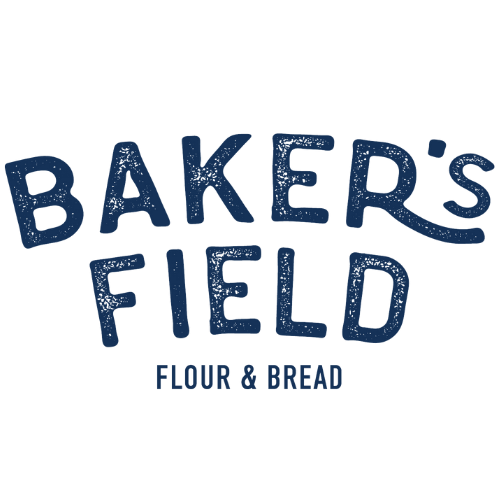What is stone-milling?
Stone-milling is a process used to crush, shear, and grind grains into flour, using mill stones.
"Millstones come in pairs. The base or bedstone is stationary. Above the bedstone is the turning runner stone which actually does the grinding. The runner stone spins above the stationary bedstone creating the 'scissoring' or grinding action of the stones." Source and more information.
In the traditional stone-milling process, as the whole grain is crushed together and then sifted to get lighter flours, even white flour will contain particles of the more nutritious germ and fibrous outer layers. In the modern roller milling process, however, the different parts of the grain are separated very efficiently, so 70% extraction white flour is almost pure endosperm and will contain much lower amounts of the nutrients that are concentrated in the germ and outer layers of the grain than stone-ground flour of an equivalent extraction rate.
We chose our method of “stone-cold-milling” because the key elements of the whole grain (the bran, endosperm, and germ) are kept more intact than flour milled by contemporary roller mills. Additionally, by milling at lower temperatures we retain the naturally occurring vitamins, minerals, and oils.
What are the benefits of eating whole grain?
We find the most important benefit of eating whole grains to be the richer taste that comes from enjoying all parts of the grain.
And according to the Whole Grains Council ,the main health benefits of eating whole grains are:
- stroke risk reduced 30-36%
- type 2 diabetes risk reduced 21-30%
- heart disease risk reduced 25-28%
- better weight maintenance
Why choose stone-milled flour?
People choose stone-milled flour for a variety of reasons. We think the best reason to choose stone-milled flour is because it makes more dynamic and delicious bread than modern white flour.
There is also a long history of stone-milled flour being a corner stone in food cultures, so we’re excited to be drawing upon this legacy as bakers continue to strive to bake breads that are delicious, unique, and sustainable.
What is stone-“cold”-milling? why does temperature matter in milling?
When people talk about stone “cold”-milling, they’re referring to the lower temperatures, usually around 80 degrees, of the milling process. This is as opposed to some stone and roller milling operations, which can be up to 125 degrees. We maintain lower temperatures by revolving the mill stones at lower speeds and slowing the “feed rate” of the grains into the mill.
There is ongoing research to understand how the heat produced during milling effects the flour. We believe that milling flour at higher temperatures can damage the quality of the flour by degrading enzymes and nutrient content. Most importantly, we think that stone-“cold”-mills produce the best tasting flour.
Where do you purchase your grains from?
We purchase most of our grains directly from farmers in the Upper Midwest. We believe that it in order to make the highest quality flour we need to be working directly with farmers that are growing unique, healthy grains. By working directly with farmers we can support their sustainable growing practices and cultivate a more connected local food community. Learn more about our farmers here.
Is stone-milled whole grain flour healthier?
The short answer is: it depends. It depends who you ask and what health benefit you are looking for.
The long answer is part of ongoing research and conversation that seeks to define how stone-milled flour is made, and to study what effects are caused by variables including heat, style of stone milling, sifting, and additional processing.
Some people prefer stone-milled whole grain flours because they contain the bran, germ, and endosperm, as opposed to many modern flours which have been milled and sifted to select just the white endosperm. Stone-milled whole grain flours still contain the oils from the germ, fiber from the bran, and protein and starch from the endosperm, which provide a wider variety of nutrients than modern white flour.
At the end of the day, we choose to work with stone-milled whole grain flour because it provides more delicious and complex flavors, and because we’re interested to continue discussing its health benefits as more research is completed.
What are bran, germ, and endosperm?
Bran, germ, and endosperm are three major components of a grain. When bran, germ, and endosperm are eaten together the food is referred to as "whole grain".
According to the Whole Grains Council:
THE BRAN
The bran is the multi-layered outer skin of the edible kernel. It contains important antioxidants, B vitamins and fiber.
THE GERM
The germ is the embryo which has the potential to sprout into a new plant. It contains many B vitamins, some protein, minerals, and healthy fats.
THE ENDOSPERM
The endosperm is the germ’s food supply, which provides essential energy to the young plant so it can send roots down for water and nutrients, and send sprouts up for sunlight’s photosynthesizing power. The endosperm is by far the largest portion of the kernel. It contains starchy carbohydrates, proteins, and small amounts of vitamins and minerals.


